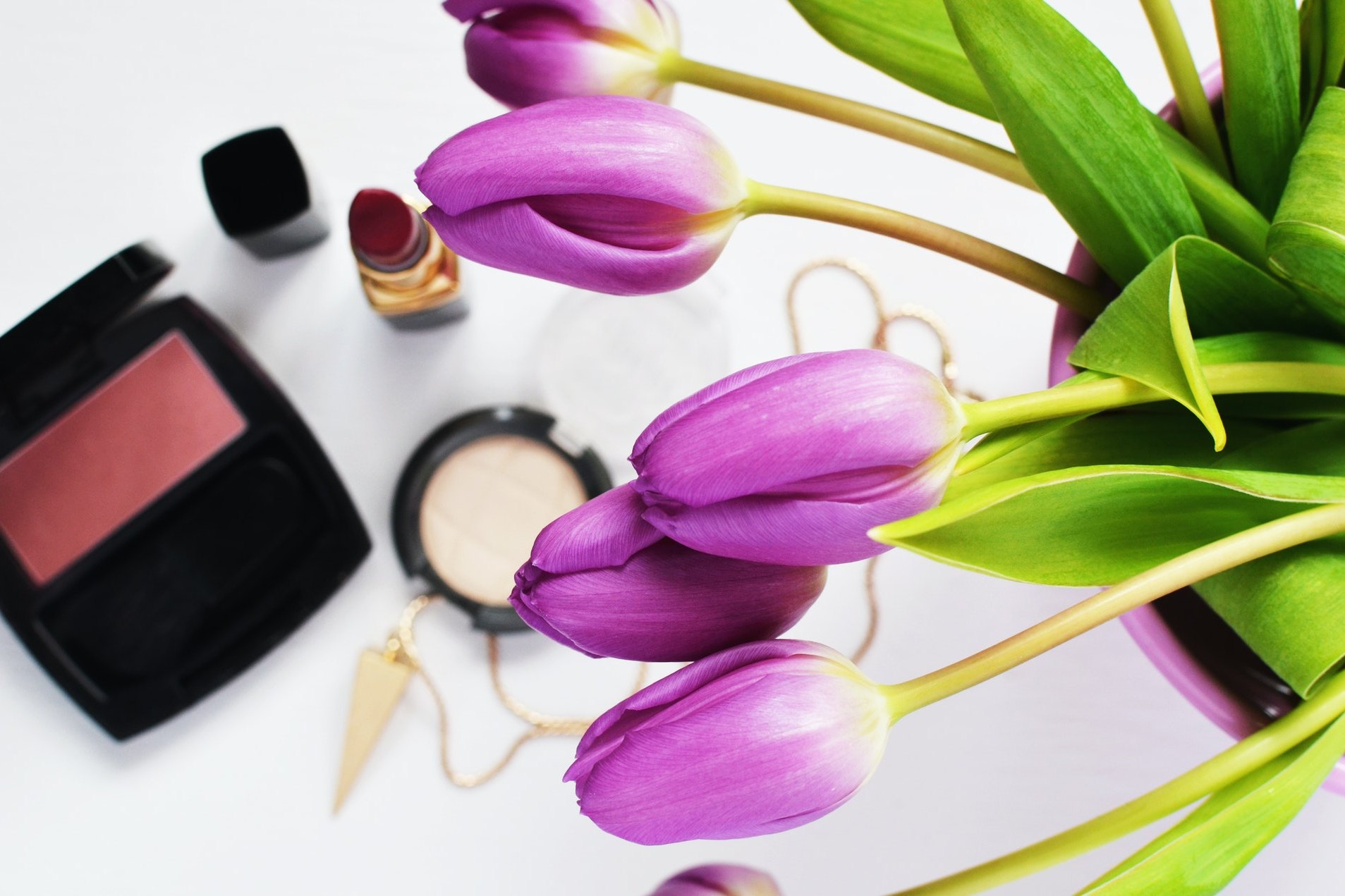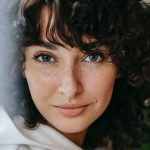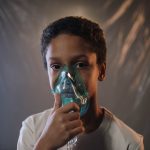[vc_row][vc_column][vc_column_text]Whether you’ve just pronounced your affirmations or corrected your crooked neckline, the mirror always reflects insightful feedback. There’s an immense power attached to being breathtaking. If you’re looking for some of it, these beauty industry statistics will dazzle you before you even spot the next flaw in your image.
Our looks are an emotional aspect of our being that thrives on community acceptance. New beauty trends are made every day. In fact, they spin so fast that it makes your latest shopping spree seem pointless. And when you think you’ve played all of your attractiveness cards, there’s a new influencer-driven beauty enhancer which begs to differ.
Despite the fluctuating market, cosmetics brands stand tall and successfully absorb the traits of new, emerging beauty trademarks. These beauty industry figures will show you how being swoon-worthy costs more than just a pretty buck.
The Top 10 Beauty Industry Market Statistics
- The global beauty industry is expected to reach a value of $863 billion by 2024.
- American women spend a monthly average of $313 on their appearance.
- Skincare accounts for 45% of the total cosmetic products’ sales.
- Every 15 seconds, 1 Avon lipstick is sold in the US.
- The global fragrance market is expected to reach an astonishing $91.17 billion by 2025.
- 1 Bioderma Sensibio H2O is sold every 3 seconds in the world.
- Nearly 50% of women search for their products online.
- 59% of consumers believe that their care products are unsafe.
- 40% of Millennials use Instagram for beauty inspiration.
- The men’s personal care industry is predicted to rise to an astonishing $166 billion by 2022.
Cosmetic Industry Statistics Worldwide
1. By 2024, the global beauty industry is expected to reach a value of $863 billion.
(Zion Market Research)
The total value of cosmetic products reached $532 billion worldwide in 2017, and is expected to rise by an astounding 60% in the 2020s. Economically, this makes its Compound Annual Growth Rate (CAGR) about 7%, similar to insurance and real-estate industries.
2. 7 fundamental factors drive the global beauty industry market.
(Allied Market Research)
The sales of cosmetic products and the provision of services are influenced by the market’s constantly changing demands. According to recent statistics, cosmetic industry trends are driven by:
- Changing lifestyles — The impact of social media has made consumers more aware of the role that cosmetics and makeup play in their lives. Women aren’t accessorizing just their looks anymore but their personalities as well, while men increasingly use skincare products and fragrances to facilitate their appearance.
- Rising GDPs of all regions — The stabilization of the global economy expansively impacts consumerism. As the average spending capacity increases, so does the need for individualism and unique appearance.
- Growth of the skincare market — According to skincare facts, the times of concealing are over, and the age of natural beauty is here. People are becoming more conscious about how lifestyle habits affect their skin and seek out products to protect and nurture it.
- Use of natural ingredients — The demand for natural cosmetics influenced manufacturers to utilize new ingredients and launch new product lines.
- Changing packaging styles and using attractive marketing strategies — A cosmetic product is more than ever considered to be a personal thing, so companies are designing unique and sustainable packaging for their products while marketing them to specific age groups.
- Advanced beauty treatments — In mainstream media, beauty facts have never been so profoundly dependent on skin physiology. New facial treatments include skin nutrition, as well as exfoliating, and regeneration.
- Increased side-effect awareness — When it comes to global beauty care, consumers are most worried about ingredients. Therefore, producers are challenged to invent new ones and reinvent the old ones to avoid the notorious chemicals.
3. 120 billion cosmetic packagings are produced every year.
(Bloomberg)
Given that almost all of these are intended for single-use, 70% of carbon emissions could be eliminated with refillable cosmetic containers, according to an organization that tracks the environmental impact of packaging.
4. According to cosmetic industry statistics, there are 10 types of cosmetic products.
(Chemist Corner)
Cosmetic products are developed, produced, and marketed with the purpose to enhance or conceal a physical trait (decorative cosmetics) or to treat and cure a skin condition (dermo-cosmetics).
And the tricky part is that the ingredients usually don’t mix. Therefore, the manufacturers use binding agents, stabilizers, or emulsifiers. A beauty product can have from 10 to 100 constituents, and the role of the producer is to combine them in a way that works.
According to skincare industry statistics, there are 10 major types of cosmetic products:
- Lotions — They are often referred to as liquid creams because of their good smearability. Lotions are an excellent choice for whole-body treatment.
- Creams — Creams are semi-liquids, which means that they have oil mixed with water-soluble components, with the help of an emulsifier. Hand creams, moisturizers, hair conditioners, and makeup are all examples of creams.
- Solutions — These are water-based, and they often include cleansers, shampoos, micellar waters, or mascaras.
- Suspensions — These are components that have solid particles dispersed in the liquid. Usually, you mix it before use, as to consolidate. New skincare trends imply the use of rich suspensions, such as in suncare products, which contain white particles of zinc or titanium dispersed inside an emulsion.
- Ointments — They can be greasy or paste-like, and they usually contain oily components. They’re an excellent choice for very dry or damaged skin.
- Powders — Depending on the ingredients, they can create different textures. Generally, they’re a combination of pulverized mineral components. The examples are talcum powder, baby powder, foot powder, and cover up makeup powder.
- Gels — One of the lesser-known skincare facts is that gels have a tridimensional matrix, which is filled with active substances. Depending on the matrix filling, they can be emul-gels, aromatherapy gels, hair styling gels, toothpaste, or body washes.
- Sticks — Usually, sticks are solid lipids packed in a container that enables selective appliance. Lipsticks and underarm deodorants are the perfect examples of sticks.
- Tablets and Capsules — These are not the ones you swallow. Instead, they are powder mixtures pressed to gain the form of a tablet or capsule, and they are used by an additional implement, such as a brush. These are target-makeup products, such as compact pressed facial powders, blushes, or eyeshadows.
- Aerosols — Commonly known as sprays or deodorants, these contain solid or liquid particles dispersed in gas.
Beauty Industry Statistics in the US
5. The US is the biggest cosmetic market in the world.
(Statista)
In 2016, the US beauty industry employed about 63,816 people and reported a revenue of $62.46 billion.
6. American women spend a monthly average of $313 on their appearance.
(NY Post)
According to a national survey, which included more than 2000 participants, women spent $57 on anti-aging face products and $58 on makeup treatments, on average. With the additional fitness expenses, it adds up to a total of $3,756 spent on beauty per year. Throughout an entire lifetime (ages 18–78), a woman spends more than $225,000 on her beauty.
7. Modern beauty statistics reveal that more than 30% of American women use foundations and concealer makeup.
(Statista)
The global makeup market is estimated to be worth $84 billion in 2024. The most popular products used to enhance or cover a facial feature are lipsticks, concealers, foundations, bronzers, mascaras, and eyeliners.
8. Every 15 seconds, one Avon lipstick is sold in the US.
(Avon)
Avon sells more than two million lipsticks annually, and the most popular shade is Cherry Jubilee. They were the first company to ever introduce the e-commerce concept.
In the age of Cleopatra, beauty facts show that lipsticks were originally made from cochineal, sandalwood or cinnabar, and mixed vax or grease. Their application lasted for weeks.
9. The average American spends approximately $89.95 on hair products annually.
(S-Schwartz)
In the US, more than 33% of the total beauty industry products are used for hair. The shampoo market holds the highest share and is expected to reach $30 billion by 2023. After the US, most hair care products are sold in Japan.
10. Only 11 chemical ingredients are FDA-prohibited.
(FDA, EU Open Data Portal)
According to beauty industry trends from 2019, compounds that are proven to impact the skin adversely are listed on the FDA’s restriction list:
- Bithionol (photocontact sensitization)
- Chlorofluorocarbon propellants (pollutants)
- Chloroform (a carcinogen)
- Halogenated salicylanilides (toxic to the skin)
- Mercury compounds (body absorption and systemic toxicity)
- Methylene chloride (a carcinogen)
- Cattle materials (systemic toxicity)
- Sunscreen chemicals (skin sensitization)
- Vinyl chloride (a carcinogen)
- Zirconium-containing complexes (lung toxicity)
- Hexachlorophene (systemic toxicity)
On the other hand, European Cosmetic Commission disallows the use of 1623 substances. This means that the American market offers stronger products that carry a higher risk of skin reactions.
The Beauty Industry Growth Statistics
11. Haircare contributes to 24% of the global beauty industry revenue.
(Franchise Help)
In short, hairdressers play the biggest role in appearance business, followed by skincare services (23.7%), such as cosmeticians, consumer cosmetics (14.6%), fragrances and perfumes (9.5%), deodorizing products (8.5%), and oral hygiene (5.6%).
12. The global haircare market is predicted to grow in value to $87 billion in 2023.
(Statista)
The rising awareness about the impact of chemicals on our hair and scalp has changed the way consumers perceive hair products. Both women and men are seeking natural, hypoallergenic hair products. Additionally, beauty industry statistics from 2019 reveal that hair nutrition is a highly valued aspect of hair care, and that there is a growing demand for vitamin-boosting products.
13. In 2018, the global medicinal shampoo market was valued at $12 billion.
(PR Newswire)
In contrast to commercial products, medicinal shampoos provide dermatological benefits for the scalp and hair. This means that they are made without harmful additives, such as sulfates or parabens. Medical shampoos treat severe dandruff, seborrheic dermatitis, psoriasis, hair loss, and dryness.
14. The global perfume market value reached $38.8 in 2018.
(Global News Wire)
Cosmetic trends are rapidly changing. It used to be an occasional spray-on that gets you the individuality edge when attending that special event. Nowadays, however, the perfume industry is more diversified than ever.
In order to attract a more extensive consumer base, perfume manufacturers are going all-in on everyday exotic fragrances. Millennials are depicted as a well-groomed generation, whose attractiveness depends on the smell as well as on the looks.
15. The US fragrance market is estimated to reach $52.4 billion in market value by 2025.
(Statista, PR Newswire)
In concurrence with the cosmetic trends of 2019, the two largest fragrance product categories are perfumes and deodorants. These are followed by lesser revenue assortment, such as pet fragrances, food aromas, and scents for objects and living spaces.
In 2016, the leading fragrance producer in the world was the L’Oreal Foundation, with annual revenue of $25.8 billion. The leading women’s fragrance brand in the US was the Body Fantasies Signature, with an annual income of $43.4 million.
According to research, the global fragrance market is expected to reach an astonishing $91.17 billion by 2025.
16. In 2018, makeup sales reached $8.1 billion.
(NPD Group)
The beauty industry trends from 2018 dictated an emergence of unusual product characteristics, such as on-face undetectability and makeup sustainability. The fastest rising products in this group were makeup sprays (fixators), liquid powders, and false eyelashes. In that year, makeup revenue increased by 29% through sales.
17. The global lip care product value was estimated at $712.8 million in 2018.
(Grand View Research)
The conventional opinion is that lip care products mainly include lipsticks. However, the majority of them actually cure damaged lips. Modern living imposes several challenges to our lips, such as darkening, chapping, splitting, and wrinkling. These often occur from sun damage, allergies, dehydration, smoking, or nutritional deficiencies.
Global Skincare Trends
18. The future holds promise for skincare products.
(Vogue)
Makeup dominated the large part of the industry in the 20th century. Today, we experience the rise of the skincare market. New product categories enter the scene, as more young consumers seek dermatologically tested products for sensitive skin.
According to a national survey, 63% of women see skincare as a wellness category, and 37% of them are using less makeup.
19. Skincare accounts for 45% of the total cosmetic products’ sales.
(NPD Group)
Following the beauty industry trends between 2017–2018, the skincare sector increased its sales by 9%. The largest increments were perceived in face masks (+32%), facial pilings (+12%), skin cleansers (+6%), age specialists (+7%), and skin moisturizers (+7%).
20. Revitalizing skincare products cashed in $13.9 million in 2018.
(Grand View Research)
Hectic and stressful lifestyles of the modern world tend to leave marks on the skin. Accordingly, the demand for anti-fatigue products is recording unprecedented sales value, which is predicted to double in the next seven years. Cosmetic brands are increasingly incorporating in their formulations the extracts of guarana, citron, Atlantic kelp, sage, geranium, cypress, rosemary, and other energizing ingredients.
21. The sales of mineral cosmetics are growing at 4.94% annually, following modern skincare trends.
(Market Watch)
In 2018, the global mineral cosmetics market size was $2.9 billion and was predicted to double by 2025.
22. The Korean beauty market is in the top 10 globally, with an estimated worth of over $13 billion in 2017.
(Mintel)
In South Korea, facial skincare products account for 51% of the total market share and are predicted to reach $7.2 billion in 2020.
23. According to skincare industry statistics, one Bioderma Sensibio H2O is sold every three seconds worldwide.
(Beauty Heaven)
Since Bioderma first introduced the concept of micellar water with its Sensibio H2O, it has been the number one product in the category.
Despite the general opinion, micellar water is not just a cleansing product. Although transparent, it contains special herbal-based molecular structures dispersed in the sterile water solution. It cleans, tones, and nourishes, as its complex structure removes both makeup and the lipid residue of the skin, therefore opening pores and making the skin smooth and fresh.
Beauty Industry Trends in Advertising
24. There are 4 trends fueling the way the modern beauty industry is reaching out to consumers.
(Business Insider)
The rise of YouTube vloggers and Instagram lipstick-celebrities has put beauty models out of business. Today, the consumer has become the retailer and the advertizer of a beauty product. As this paradigm changes, the global beauty industry follows. According to the research, the main trends that are driving these marketing innovations are:
- Change of traditional retailers — Shopping malls have become beauty palaces, where every retailer — from a pharmacy to a shoe store — offers good looks. For example, H&M’s assortment of beauty products has increased by 94.8%, according to beauty industry statistics from 2018–2019.
- The rise of the targeted pricing — Retailers are creating their own brands and pricing them according to the desires of the targeted audience.
- Increased transparency — Direct-to-consumer companies now offer a great deal of information regarding their production, such as the ingredient’s pricing, the overview of the manufacturing stages, and the acquisition of the product’s components.
- Sustainable alternatives — Demand for clean alternatives is rapidly growing, and the producers are increasingly reconsidering recycling packaging and natural ingredients.
25. Skincare trends of 2018 show that online distribution channels facilitated 15% of total cosmetic sales.
(Grand View Research)
Beauty products are commonly purchased in retail stores. However, online shopping trends are increasing with a stable rate of 9.4% annually for the predicted period from 2019–2025.
26. Nearly 50% of women search for products online.
(NPD Group)
According to a national survey, the majority of women prefer the advice of search engines than shop retailers. While looking up a product, they’re mainly concerned about the ingredients. According to the beauty industry statistics, 46% of skincare users purchase products without phthalates, gluten, and sulfates. Additionally, more than half of the internet searches are aimed at seeking organic ingredients in beauty products.
27. A stunning 59% of the consumers believe that their personal care products are unsafe.
(Persistent Market Research)
According to the Global Market Study on Natural & Organic Personal Care Products from 2019, 56% of the consumers are aware of the ingredients used in beauty products that they use. Additionally, 92% of them believe in having stringent industry requirements and guidelines on the use of particular ingredients.
28. Millennial skincare statistics reveal that 40% of them use Instagram for beauty inspiration.
(Khoros)
Instagram facts reveal that 52% of Millennials seek a product for a special occasion. 76% of Millennials that are seeking beauty advice on Instagram are women, and 48% of them trust their influencers. 50% of the users aged 35–64 use Instagram only to compare prices.
(Franchise Help)
Social media influencers overtook the spotlight from famous billboard models, and they are diverse enough to cater to any consumer type. According to skincare trends of 2019, every Instagram trendsetter has a type of a follower-consumer that is attracted to a particular beauty trend.
30. 62% of the generation Z research beauty advice online.
(Stella Rising)
44% of those born in the 21st century, shop based on advice from Instagram, while 32% of them follow YouTube advice.
In teenagers, social media has increased peer pressure to look good. A staggering 90% of girls and 70% of boys actively seek beauty advice.
31. The L’Oreal Foundation spent $9.16 billion on advertisements in 2017.
(Mordor Intelligence)
The competitive market is constantly challenging prominent companies to advertise and grow online audiences for their brands. Cosmetic trends from 2017 show the main strategies for expansion, and they include acquisitions, penetration on new markets, and product launches.
The major players in the cosmetic advertisement in 2017 were:
- Coty Inc.
- Shiseido Co.
- L’Oreal SA
- LVMH
- Estée Lauder
Men’s Beauty Trends
32. South Korean men spend most on beauty products.
(CNN)
Two-thirds of men in South Korea use grooming and cosmetics services. This has been an increasing trend for two decades now, and it’s still rising. Between 2011 and 2017, this market grew by 44%.
According to men’s skincare statistics, in the world of beauty, 58% of Generation Zers indulge in weekly skincare treatment. Overall, 34% of South Koreans spend money on their appearance.
33. The men’s personal care industry is predicted to rise to an astonishing $166 billion by 2022.
(CNBC)
Women are not the major stakeholders in the beauty industry anymore, as the vast majority of men intend to look best and therefore invest in it.
34. Beard care products are rising at a pace of 7.7% annually.
(Discover News Line)
Men’s beauty industry market size is quadrupling. Beards have never been so trendy as they are today, which is represented by the beard market value estimation, which is at $2.38 billion. In fact, the strongest brands in the industry actually hold the lesser portion of this market, being beaten in the race by small-company products.
The overwhelming impact of social media and celebrity endorsements helps fuel this market’s growth. Additionally, more than 20% of personalized men’s care products are purchased online.
35. 21% of all retailed shaving foams are organic.
(Grand View Research)
Skincare industry trends showed that, in 2018, social media advertisements significantly contributed to the rising awareness of male grooming and hygiene. According to the available data, Europeans hold the highest ground in men-hygiene, with 34% of the global sales. In 2018, the global market value of the shaving foam industry was $437.42 million, with a stable annual growth rate of 4.08% for the next 10-year period.
Beiersdorf AG, with its brands Nivea and Eucerin, is dominating the European market and plays even a bigger role globally. The prominent places in the men’s beauty market are held by the Procter & Gamble Company, Ahava, and Biotherm.
Organic Skincare Market Trends
36. More than 50% of women prefer natural-labeled products.
(NPD Group)
Nowadays, women perceive their skin as sensitive, and 40% of them purchase products that are free of artificial additives. 50% of them seek hypoallergenic formulations, while 48% gravitate towards the use of 100% organic products.
37. The global organic beauty market is predicted to reach $15.98 billion in 2020.
(Formula Botanica)
The natural cosmetics market is booming as well. With the approximate annual growth rate of 6–8%, they are predicted to increase their revenue to $54 billion by 2027.
One of the dominant skincare industry trends is described as shifting perspective from traditional cosmetics to organic ones, which is driving the industry makeover. Organic skincare products take up the leading share, closely followed by hair care products.
38. The UK is the world leader in skincare products that target the skin microbiome.
(Mintel)
In 2018, over 37% of the global skin-ecosystem products were launched in the UK. As the new generations embrace specialized skincare products, the demands for novelty approaches are rising. The latest trends in the UK are gluten-free, vegan, and clean-color hair care products. Overall, 74% of the global novelty luxury brands in 2018 were launched in the UK.
The Bottom Line
The latest skincare market statistics clearly show that this industry successfully resists challenges and quickly adapts to new trends. In the end, who knows what beauty paradigm the future holds for us?
As shown, men are increasingly taking a greater stakeholder share of the market, while the industry has more than a few adorable cards up in its sleeve for them. Women, on the other hand, seek out natural and more wholesome ways to treat their skin. Even the makeup is becoming care-oriented.
Throughout history, the mirror was undoubtedly the only way to get some feedback on beauty. However, as shown by new beauty industry statistics, the mirrors of the future will look like a selfie camera. Or even something more evolved.
Sources:
- Allied Market Research
- Avon
- Beauty Heaven
- Bloomberg
- Business Insider
- Chemist Corner
- CNBC
- CNN
- Discover News Line
- EU Open Data Porta
- FDA
- Formula Botanica
- Franchise Help
- Franchise Help
- Global News Wire
- Grand View Research
- Grand View Research
- Grand View Research
- Grand View Research
- Khoros
- Market Watch
- Mintel
- Mintel
- Mordor Intelligence
- NPD Group
- NPD Group
- NPD Group
- NPD Group
- NY Post
- Persistent Market Research
- PR Newswire
- S-Schwartz
- Statista
- Statista
- Statista
- Statista
- Stella Rising
- Vogue
- Zion Market Research
[/vc_column_text][/vc_column][/vc_row]



